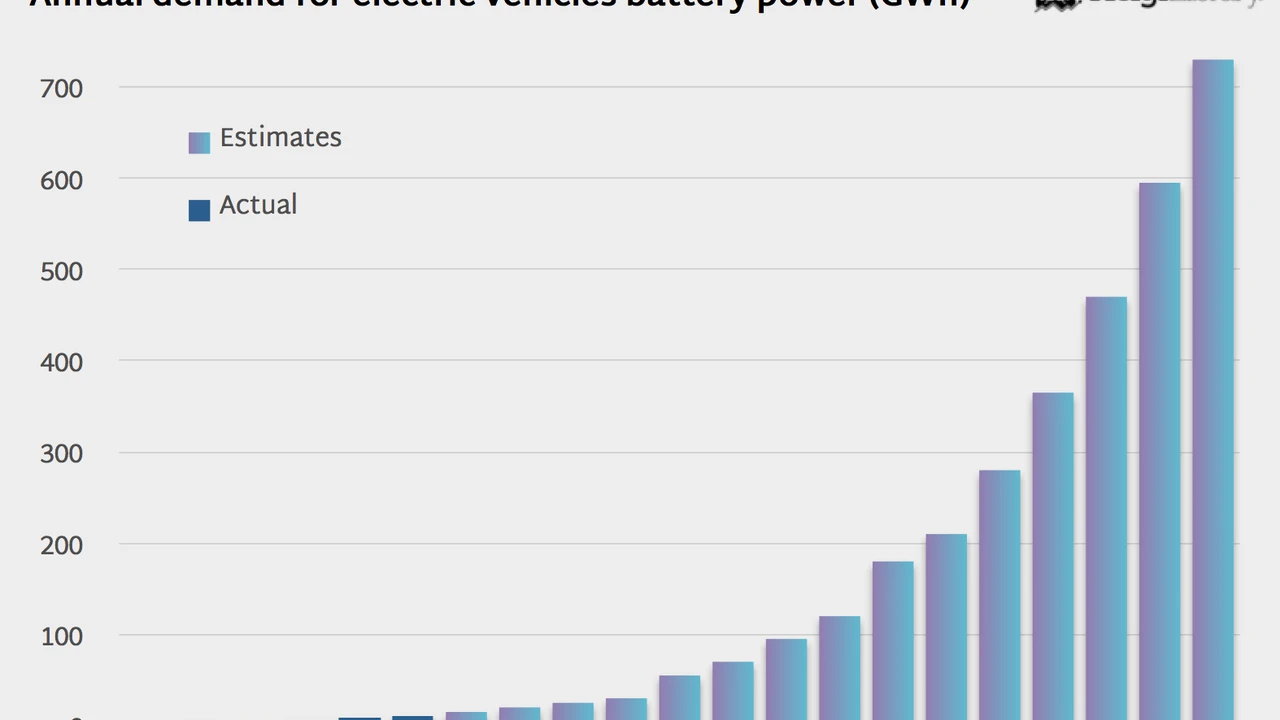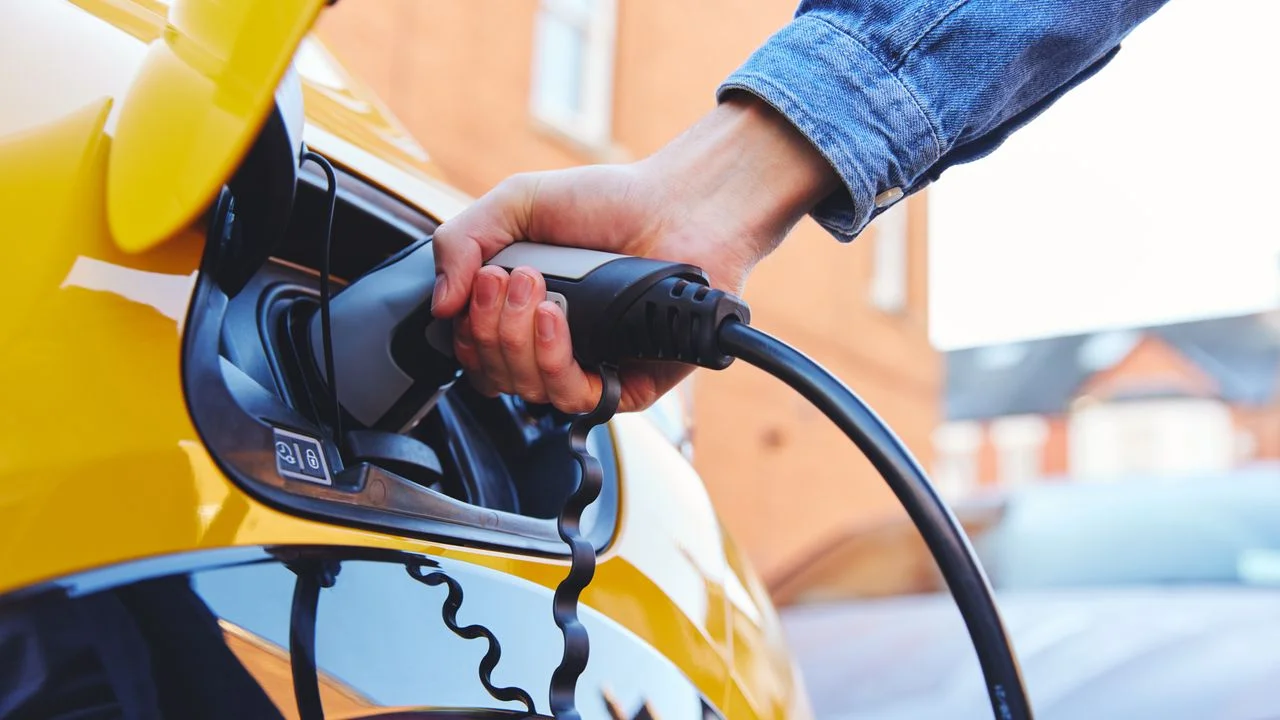EV Battery Production Costs and Trends
An overview of electric vehicle battery production costs and future market trends.

EV Battery Production Costs and Trends Unpacked
Hey everyone! Let's dive deep into something super crucial for the electric vehicle revolution: battery production costs and where they're headed. This isn't just about numbers; it's about understanding what drives EV affordability, accessibility, and ultimately, mass adoption. We're talking about the very heart of an EV, and its price tag significantly impacts everything from the sticker price of your next electric car to the speed at which charging infrastructure expands. So, buckle up, because we're going to break down the complexities of EV battery economics, look at some real-world examples, and peek into the crystal ball for future trends.
The Current Landscape of EV Battery Cost Per kWh
First off, let's talk about the big one: the cost per kilowatt-hour (kWh). This metric is the gold standard for measuring battery pack prices. Historically, EV batteries were incredibly expensive, making electric cars luxury items. But boy, have things changed! We've seen a dramatic decline in prices over the last decade. Back in 2010, a battery pack could cost well over $1,000 per kWh. Fast forward to today, and we're looking at figures that are a fraction of that. This reduction is a massive win for consumers and manufacturers alike.
Factors Influencing EV Battery Production Costs
So, what's driving this impressive cost reduction? It's not just one thing; it's a combination of several key factors:
- Raw Material Prices: Lithium, cobalt, nickel, manganese – these are the foundational elements. Their availability, mining costs, and global demand fluctuations play a huge role. For instance, a surge in lithium prices can directly impact battery costs.
- Manufacturing Scale and Efficiency: As gigafactories pop up and production scales dramatically, manufacturers gain economies of scale. Automated processes, optimized supply chains, and continuous improvement in production techniques lead to lower costs per unit. Think about how much cheaper a smartphone became once production ramped up globally.
- Battery Chemistry Advancements: This is a big one! Researchers and engineers are constantly innovating. Moving from older chemistries to more energy-dense and cost-effective ones, like nickel-manganese-cobalt (NMC) and lithium iron phosphate (LFP), has been pivotal. LFP, for example, is generally cheaper due to the absence of cobalt and nickel, making it a popular choice for standard range EVs.
- Pack Design and Integration: It's not just the cells; it's how they're put together. Innovations like cell-to-pack (CTP) or cell-to-chassis (CTC) designs reduce the number of intermediate components, simplifying manufacturing and cutting costs. This means fewer parts, less labor, and a more efficient overall battery system.
- Research and Development (R&D) Investment: Significant investments in R&D by governments, automotive companies, and battery manufacturers are constantly pushing the boundaries of what's possible, leading to more efficient and cheaper production methods.
Key Trends in EV Battery Cost Reduction and Market Dynamics
The trend of declining battery costs isn't slowing down, but the pace might vary. Here's what we're seeing and what to expect:
The Race to $100/kWh and Beyond for EV Batteries
Many industry experts consider the $100/kWh mark as the holy grail for EV battery packs. Why? Because at this price point, electric vehicles are expected to reach price parity with comparable internal combustion engine (ICE) vehicles, even without subsidies. We're getting closer, with some reports indicating that certain LFP battery packs are already hitting this target or even going below it for specific applications. This is a game-changer for mass market adoption.
Impact of Raw Material Volatility on EV Battery Pricing
While the overall trend is down, raw material prices can introduce volatility. The prices of lithium, cobalt, and nickel have seen significant swings due to supply chain disruptions, geopolitical events, and increased demand. This can create temporary upward pressure on battery costs. Manufacturers are mitigating this by diversifying their supply chains, investing in direct mining operations, and exploring alternative chemistries that rely less on scarce or expensive materials.
The Rise of LFP Batteries in Mainstream EVs
Lithium Iron Phosphate (LFP) batteries are making a huge comeback, especially in more affordable and standard-range EVs. Companies like Tesla, BYD, and Ford are increasingly using LFP cells. Their advantages include lower cost, better thermal stability (meaning less risk of thermal runaway), and longer cycle life. While they traditionally had lower energy density compared to NMC, advancements are rapidly closing that gap, making them a very attractive option for a wide range of vehicles.
Next-Generation Battery Technologies and Their Cost Implications
Looking ahead, several next-generation battery technologies promise further cost reductions and performance improvements:
- Solid-State Batteries: These are often touted as the 'holy grail' due to their potential for higher energy density, faster charging, and improved safety. While still in the R&D phase for mass production, if successful, they could significantly lower costs by simplifying pack design and reducing reliance on certain materials.
- Sodium-Ion Batteries: These are gaining traction as a potential low-cost alternative, especially for stationary storage and potentially entry-level EVs. Sodium is far more abundant and cheaper than lithium, offering a compelling cost advantage. Companies like CATL are already making strides here.
- Silicon Anodes: Integrating silicon into anodes can dramatically increase energy density, meaning smaller, lighter, and potentially cheaper battery packs for the same range.
Real-World Examples and Product Recommendations for EV Batteries
While you can't directly buy an EV battery pack off the shelf for your car (unless you're a manufacturer or a very specialized repair shop), understanding the companies and technologies behind them gives you insight into the market. Here are some key players and their contributions to battery cost trends:
Leading EV Battery Manufacturers and Their Strategies
- CATL (Contemporary Amperex Technology Co. Limited): This Chinese giant is the world's largest EV battery manufacturer. CATL is a leader in LFP technology, including their innovative 'Blade Battery' which simplifies pack design, leading to cost savings and improved safety. They supply batteries to numerous global automakers, including Tesla, BMW, and Ford. Their focus on high-volume production and continuous innovation in cell chemistry and pack design directly contributes to lower costs.
- LG Energy Solution: A major player from South Korea, LGES produces a wide range of battery cells, primarily NMC chemistry. They are a key supplier to General Motors, Hyundai, and Stellantis. LGES is investing heavily in new gigafactories globally, which will further drive down costs through economies of scale.
- Panasonic: A long-standing partner of Tesla, Panasonic is known for its high-performance cylindrical cells. They are continuously working on improving energy density and reducing costs through manufacturing efficiencies. Their new 4680 cells for Tesla are a prime example of this, aiming for higher energy density and lower production costs.
- BYD: This Chinese company is unique as it's both an EV manufacturer and a major battery producer (their 'Blade Battery' is also LFP-based). Their vertical integration allows them significant control over costs and supply chains, making their EVs highly competitive on price.
- Samsung SDI: Another South Korean powerhouse, Samsung SDI focuses on prismatic and cylindrical cells, supplying to BMW, Audi, and Stellantis. They are also heavily invested in next-generation battery research, including solid-state technology, which could unlock future cost reductions.
How Battery Choices Impact EV Pricing and Performance
When you look at different EV models, the type of battery they use often correlates with their price point and performance characteristics:
- Entry-Level EVs (e.g., Tesla Model 3 Standard Range, BYD Dolphin): These often utilize LFP batteries. This choice helps keep the purchase price lower, making EVs more accessible. While their range might be slightly less than premium models, they are perfectly adequate for daily commuting and offer excellent value. The cost savings from LFP batteries are directly passed on to the consumer.
- Mid-Range to Premium EVs (e.g., Tesla Model Y Long Range, Hyundai Ioniq 5, Ford Mustang Mach-E): These typically use NMC or NCA (Nickel-Cobalt-Aluminum) chemistries. These batteries offer higher energy density, leading to longer ranges and often faster charging speeds. The higher material costs are reflected in the vehicle's price, but consumers get enhanced performance and range.
- High-Performance and Luxury EVs (e.g., Porsche Taycan, Lucid Air): These vehicles push the boundaries of battery technology, often using highly optimized NMC or NCA cells with advanced cooling systems. The focus here is on maximum power output, rapid charging, and extended range, justifying a higher price point.
For example, a Tesla Model 3 Standard Range with an LFP battery might start around $40,000-$45,000, offering a range of about 270 miles. In contrast, a Tesla Model 3 Long Range with an NMC battery might be priced closer to $50,000-$55,000, providing over 330 miles of range. This price difference is largely attributable to the battery chemistry and its associated costs and performance.
Future Outlook for EV Battery Costs and Market Trends
The trajectory for EV battery costs remains downward, albeit with potential short-term fluctuations. Here's what the future holds:
Continued Cost Reduction Through Innovation and Scale for EV Batteries
Expect to see continued innovation in battery chemistry, manufacturing processes, and pack integration. The drive for higher energy density, faster charging, and improved safety will also inherently lead to more cost-effective solutions. As more gigafactories come online globally, the sheer volume of production will continue to push prices down through economies of scale.
The Role of Recycling and Second-Life Applications in EV Battery Economics
Battery recycling is becoming increasingly important. As more EVs reach their end-of-life, the ability to recover valuable raw materials like lithium, cobalt, and nickel will reduce the reliance on new mining, potentially stabilizing and even lowering raw material costs in the long run. Furthermore, second-life applications, where EV batteries are repurposed for stationary energy storage, add another layer of value and economic efficiency to the battery lifecycle.
Government Policies and Subsidies Impacting EV Battery Production
Government policies, such as tax credits for EV purchases or incentives for domestic battery production (like the Inflation Reduction Act in the US), play a significant role. These policies can accelerate the establishment of local supply chains and manufacturing facilities, further contributing to cost reductions and supply chain resilience. For instance, the push for localized battery production in the US and Europe aims to reduce reliance on Asian suppliers and create more stable pricing.
The Interplay of Energy Density and Cost in Future EV Batteries
The balance between energy density (how much energy a battery can store per unit of weight or volume) and cost will be crucial. While higher energy density often means better performance and range, it can sometimes come at a higher cost. Future battery development will focus on optimizing this balance, finding the sweet spot where performance meets affordability for various vehicle segments.
So, there you have it. The world of EV battery production costs is dynamic and complex, but the overarching trend is clear: batteries are getting cheaper, more efficient, and more diverse. This continuous evolution is what will ultimately make electric vehicles the dominant form of transportation worldwide, benefiting both our wallets and the planet.
:max_bytes(150000):strip_icc()/277019-baked-pork-chops-with-cream-of-mushroom-soup-DDMFS-beauty-4x3-BG-7505-5762b731cf30447d9cbbbbbf387beafa.jpg)






